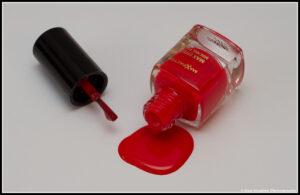Spills and Stains – 3 Steps to Success
We’ve all done it, whether it was a spot of being careless with mud-tracked shoes or getting overzealous about telling a story with a glass of wine in hand. Spills and stains can easily ensue and are often more likely to occur in areas of your home where stains are never tolerated! Getting upset about a spillage doesn’t do anybody involved any favours so take a deep breath, think rationally and follow these three steps.
1. Act Fast
 Although we don’t always immediately notice spills after they happen it is important to act fast once you have seen the affected area.
Although we don’t always immediately notice spills after they happen it is important to act fast once you have seen the affected area.
Scrape up or blot up any excess spillage before applying any cleaners and never try to rub or scrub a stain out.
Blotting works wonders and will help you to get most of the spill out before resorting to more drastic measures! Work from the outside of the stain inwards to prevent it from spreading and if you are worried about wet spots, use a hairdryer to speed up the blotting process.
2. Don’t Panic
It is important that you act fast, but also equally important that you act rationally. Panicking leads to making rash decisions and silly mistakes that you will regret later. If you tackle the stain as best you can with the knowledge you have and it is still there, simply get in touch with a professional cleaner and they will be right over.
Trying to desperately remove the stain using extreme chemicals could only serve to worsen the situation, so if you can’t easily get rid of it using your household fabric cleaners, call in a professional cleaner who will be able to help you.
3. Always Read the Label
 You might think this a superfluous point but it sometimes makes all the difference between a ruined sofa and a sofa swiftly saved. Read your labels! Before applying any chemical or natural product to your stain or spill, read the label to see whether or not it could be harmful to you or the material you are using this on.
You might think this a superfluous point but it sometimes makes all the difference between a ruined sofa and a sofa swiftly saved. Read your labels! Before applying any chemical or natural product to your stain or spill, read the label to see whether or not it could be harmful to you or the material you are using this on.
Obviously, we rarely have time to do this in the heat of the moment, so read your labels beforehand so that you know exactly what you need when the time comes.
If your sofa or your recliner has a label detailing fabric care and maintenance guides, this might also be a useful source of information.
Some fabrics are dry clean only, whereas others react badly to particular chemicals. Getting an idea of what works and what doesn’t on your home furniture is really useful, especially when tackling a spill in good time.
